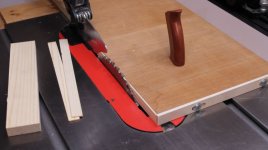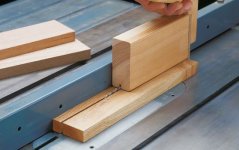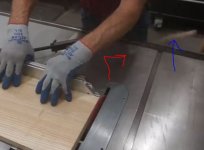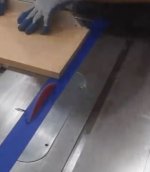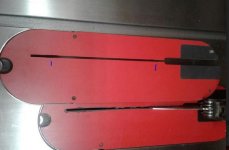Birdhunter
Member
- Joined
- Jun 16, 2012
- Messages
- 4,144
Received my Thin Rip Guide today. Carefully packaged. The only hard part of assembling it was peeling off the protective tape off the two sighting glasses. It works as advertised to cut repetitive thin strips with excellent accuracy.
I’ve been able to do his in the past, but this tool is a lot faster and can be taken off the saw (SawStop) and put back on without losing accuracy.
It has two 5 sided washers that slide into the miter bar slot. Very secure, but I wish a short (8”) miter bar was an option. Getting the washers lined is fussy.
Overall, this is a tool I will use often.
I’ve been able to do his in the past, but this tool is a lot faster and can be taken off the saw (SawStop) and put back on without losing accuracy.
It has two 5 sided washers that slide into the miter bar slot. Very secure, but I wish a short (8”) miter bar was an option. Getting the washers lined is fussy.
Overall, this is a tool I will use often.


